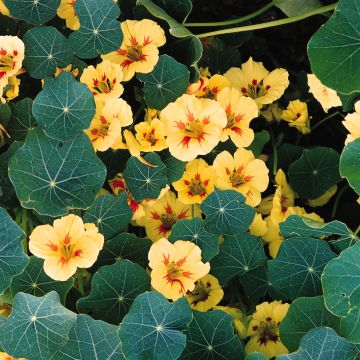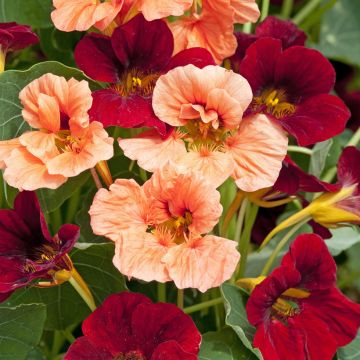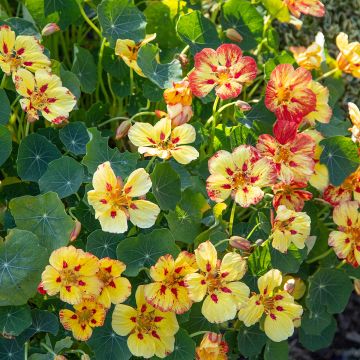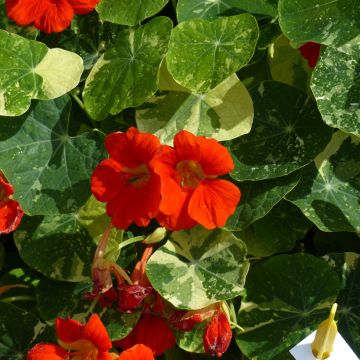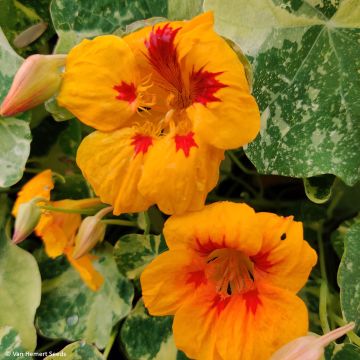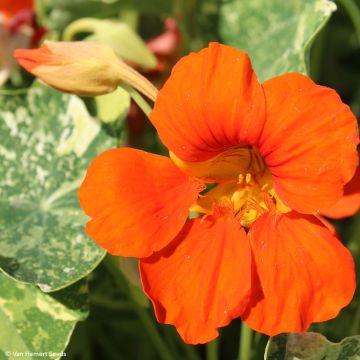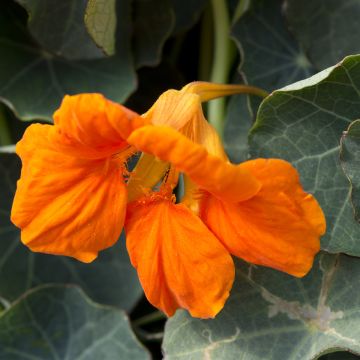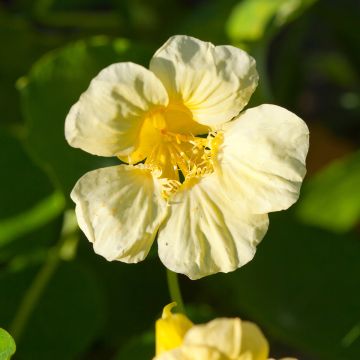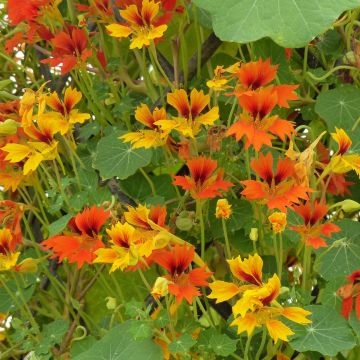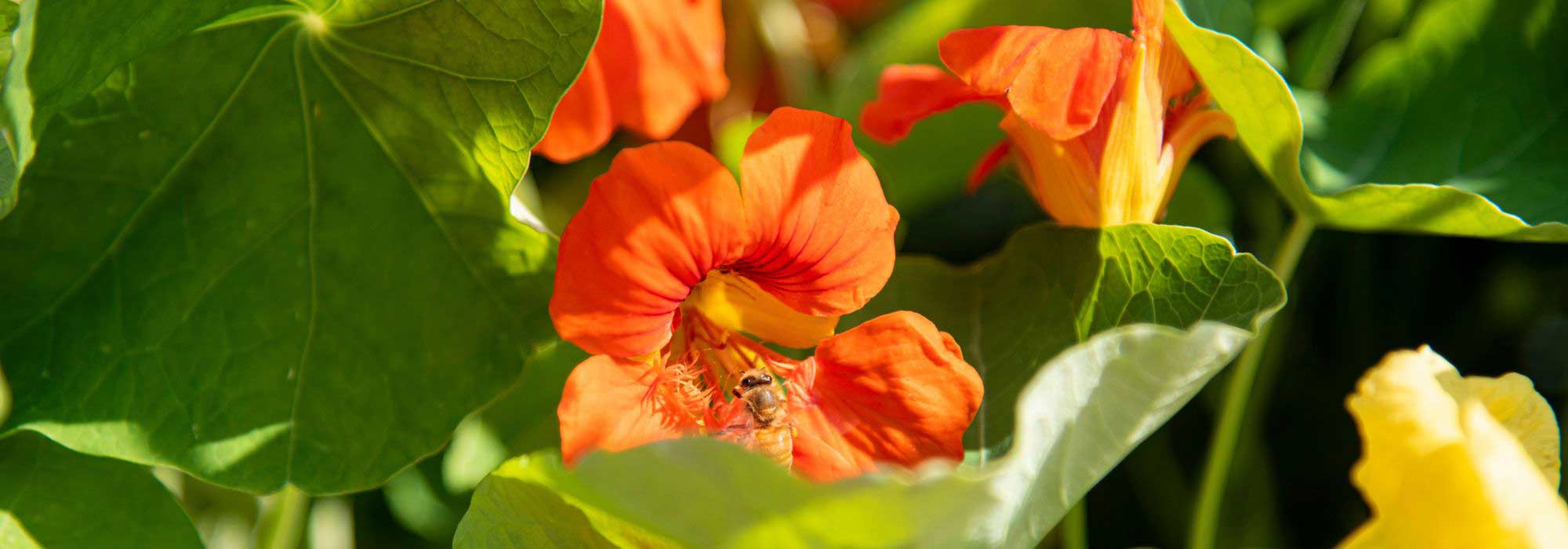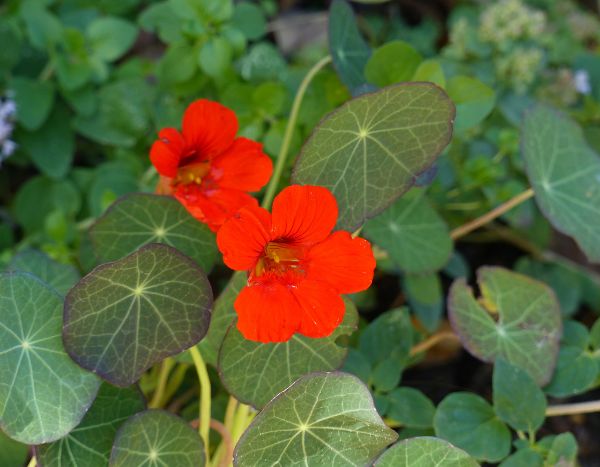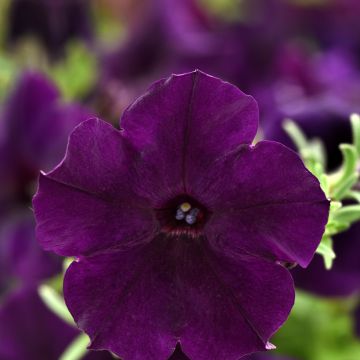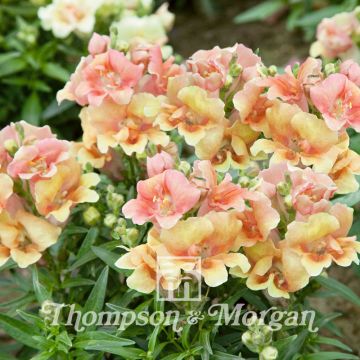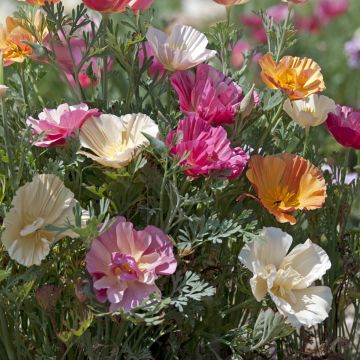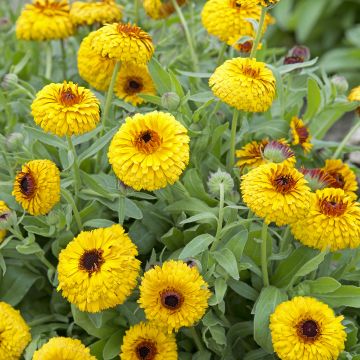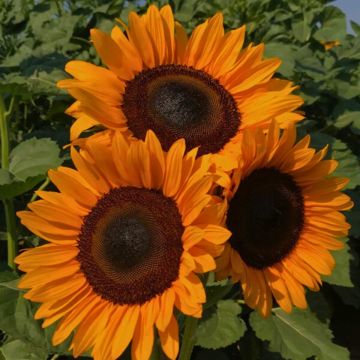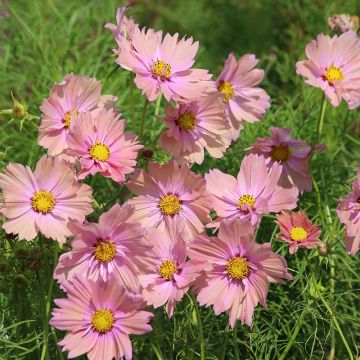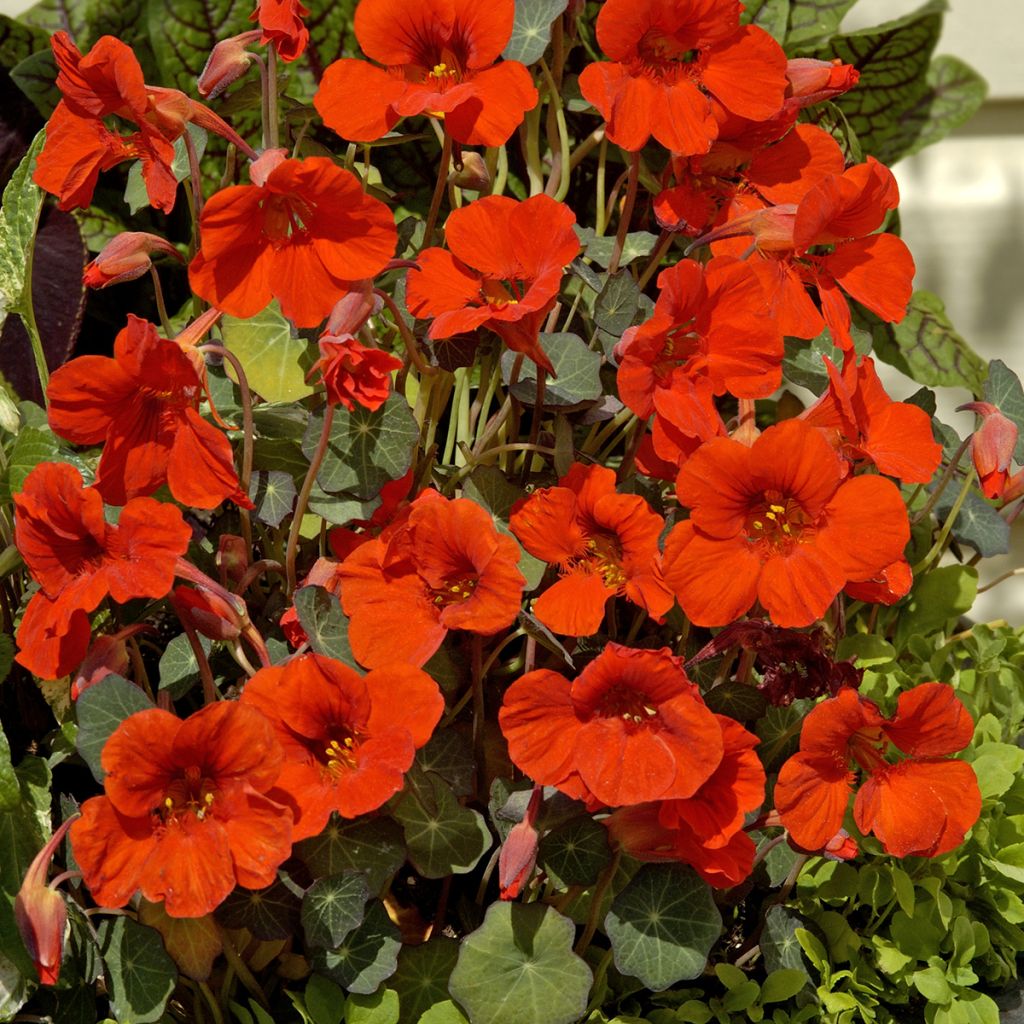

Tropaeolum Empress of India - Dwarf Nasturtium Organic Seeds
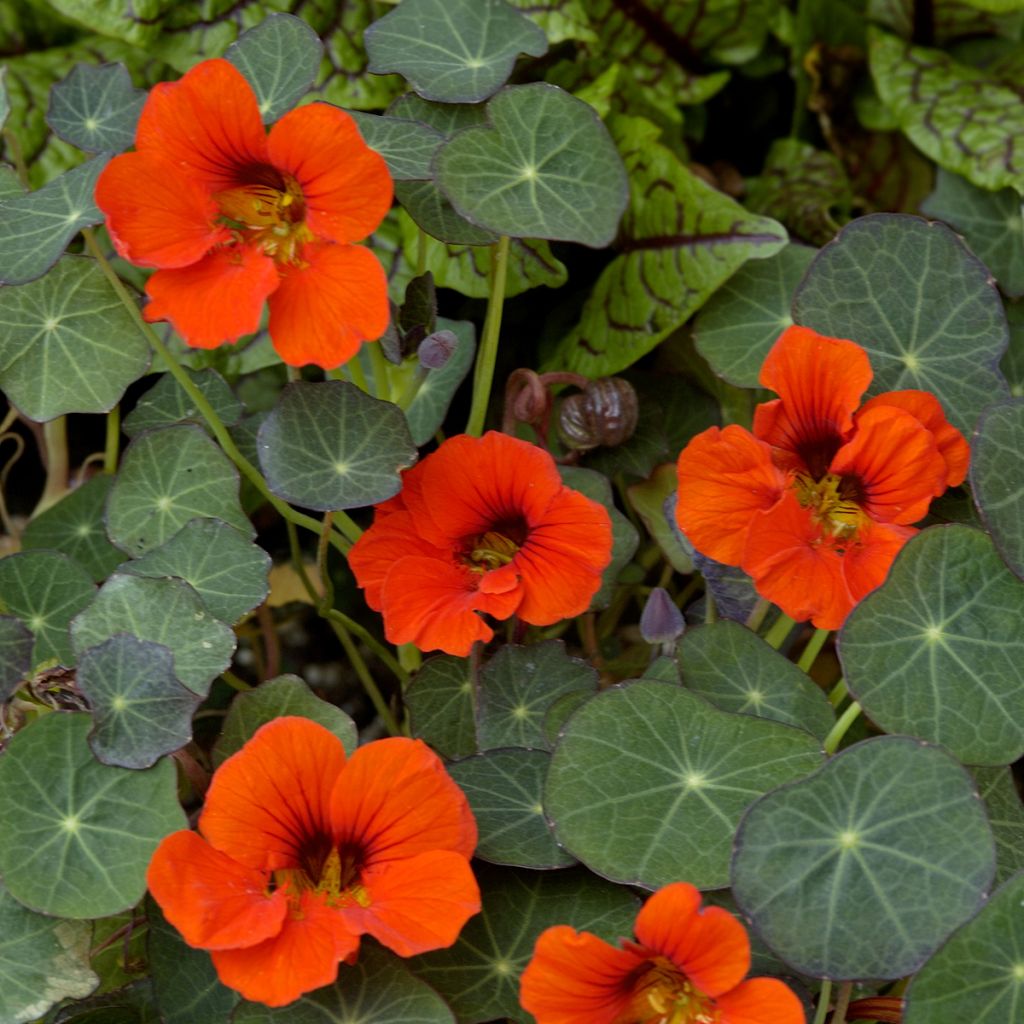

Tropaeolum Empress of India - Dwarf Nasturtium Organic Seeds
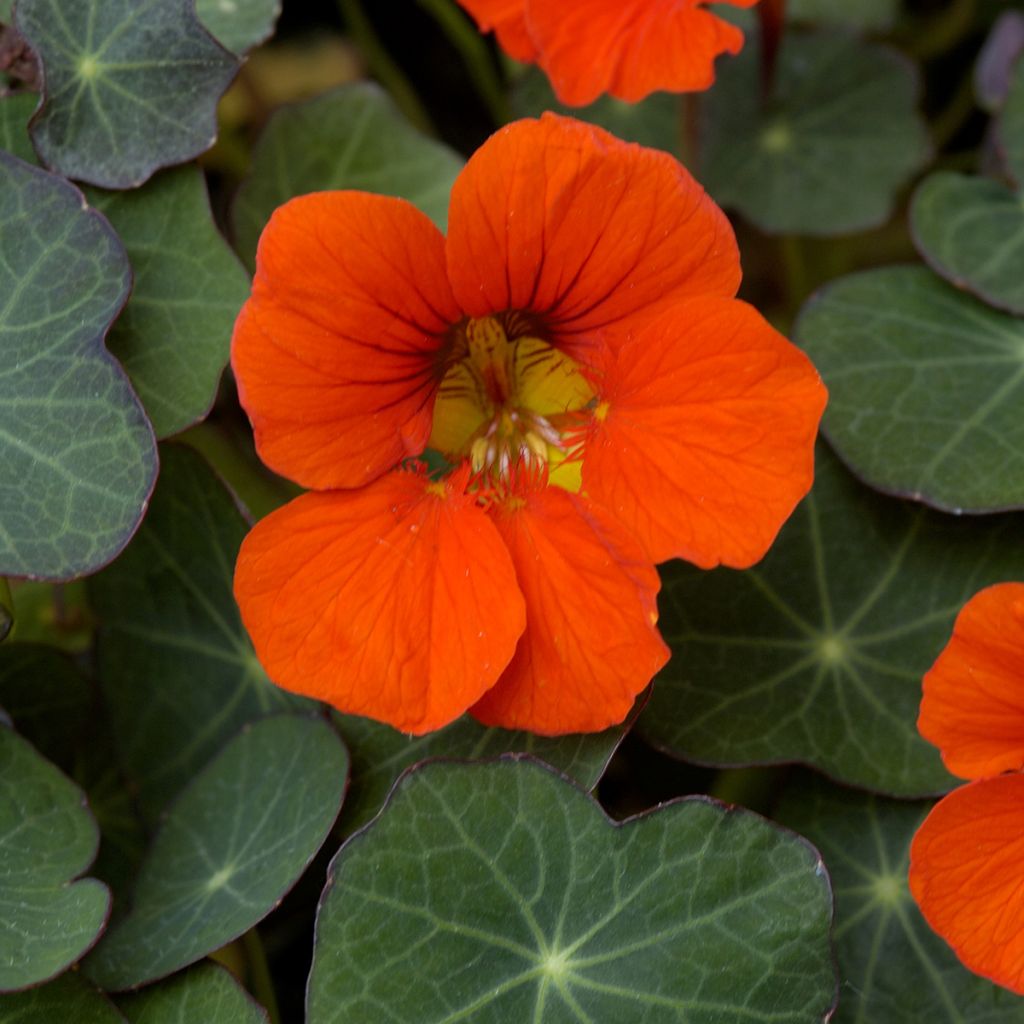

Tropaeolum Empress of India - Dwarf Nasturtium Organic Seeds
Tropaeolum Empress of India - Dwarf Nasturtium Organic Seeds
Tropaeolum majus Empress of India
Garden Nasturtium, Dwarf Nasturtium
Special offer!
Receive a €20 voucher for any order over €90 (excluding delivery costs, credit notes, and plastic-free options)!
1- Add your favorite plants to your cart.
2- Once you have reached €90, confirm your order (you can even choose the delivery date!).
3- As soon as your order is shipped, you will receive an email containing your voucher code, valid for 3 months (90 days).
Your voucher is unique and can only be used once, for any order with a minimum value of €20, excluding delivery costs.
Can be combined with other current offers, non-divisible and non-refundable.
Home or relay delivery (depending on size and destination)
Schedule delivery date,
and select date in basket
This plant carries a 6 months recovery warranty
More information
We guarantee the quality of our plants for a full growing cycle, and will replace at our expense any plant that fails to recover under normal climatic and planting conditions.
Would this plant suit my garden?
Set up your Plantfit profile →
Description
Tropaeolum majus 'Empress of India' is a dwarf variety whose particularly bluish rounded foliage beautifully displays its bright vermilion red flowers. This compact annual is ideal for pots and hanging baskets. It also works well in borders in small gardens. The flowers and foliage are edible, with a peppery flavour.
Tropaeolum majus belongs to the Tropaeolaceae family. It is a climbing or creeping annual plant, native to South America. It has given rise to many varieties and forms, some of which are compact, single-flowered, or double-flowered. Nasturtiums bear pretty flowers with bold colours, ranging from yellow to red, and beautiful round leaves. 'Empress of India' develops a compact, trailing habit and quickly forms a 30cm (12in) clump in all directions. Its parasol-like bluish-green leaves are covered with trumpet-shaped flowers of a vibrant scarlet-red.
Nasturtiums are very easy to grow. The seeds can be sown directly in place in spring. Nasturtiums grow quickly. They bloom from June to the first frost, covering the ground or cascading from pots and baskets. The foliage is very ornamental, and looks wonderful at the edge of or in the foreground of flower beds. The foliage is quickly covered with an abundance of blooms. Combine nasturtiums with other flowering plants such as lavender or asters, and other annuals such as cosmos, zinnias, and marigolds.
All parts of the plant are edible. The leaves, seeds, and flowers can be eaten in salads.
Aphids are fond of nasturtiums. Use this to your advantage by planting them in the vegetable garden and orchard, where they will act as a diversion (while hosting valuable food for ladybird larvae) and thus protect your crops.
Tropaeolum Empress of India - Dwarf Nasturtium Organic Seeds in pictures
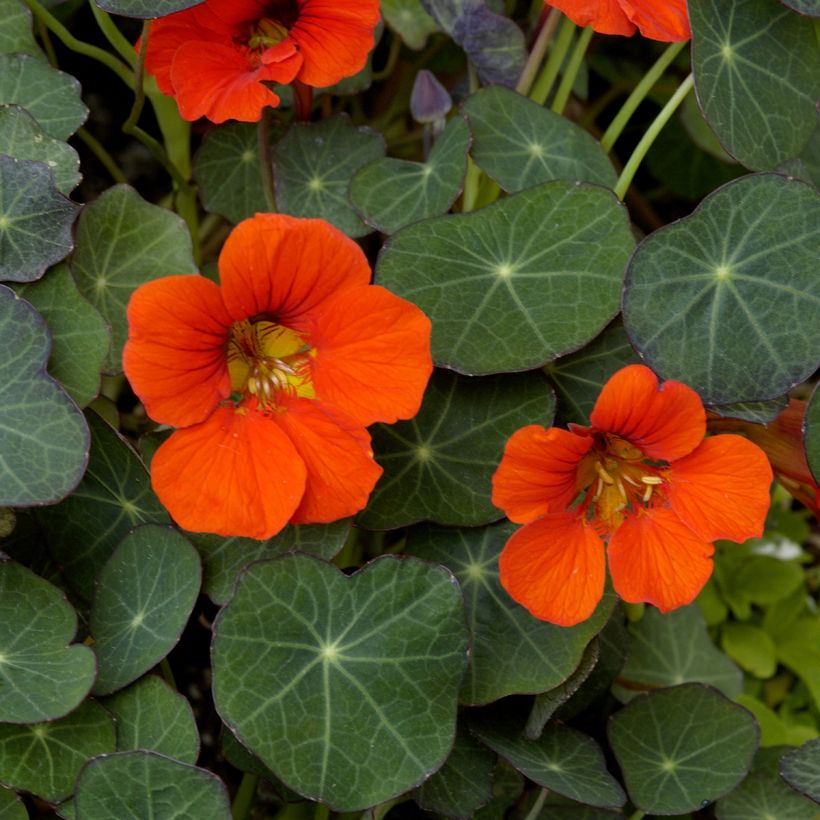

Flowering
Foliage
Plant habit
Botanical data
Tropaeolum
majus
Empress of India
Tropaeolaceae
Garden Nasturtium, Dwarf Nasturtium
Cultivar or hybrid
Other Nasturtium seeds
View all →Planting and care
Sow your nasturtiums outdoors from March to May. Choose a sunny spot, with well-drained, loosened soil. Sow in rows, 2cm (1in) deep, 30cm apart (12in), then cover with soil. Water regularly, especially during dry periods. Germination usually takes 7 to 12 days. When the seedlings are strong enough to be handled, thin them out, keeping one seedling every 30cm (12in).
Nasturtiums can also be sown indoors at a temperature of 15 to 25°C (59 to 77°F). When the plants are strong enough to be handled, transplant and harden them off gradually until they are ready to be moved outdoors (once frosts are no longer a risk).
Nasturtiums like moist, well-drained soil, in the sun or half-shade. They are often attacked by aphids and cabbage moths. You can keep this under control by spraying your plants with mildly soapy water.
Sowing period
Intended location
Planting & care advice
This item has not been reviewed yet - be the first to leave a review about it.
Similar products
Haven't found what you were looking for?
Hardiness is the lowest winter temperature a plant can endure without suffering serious damage or even dying. However, hardiness is affected by location (a sheltered area, such as a patio), protection (winter cover) and soil type (hardiness is improved by well-drained soil).

Photo Sharing Terms & Conditions
In order to encourage gardeners to interact and share their experiences, Promesse de fleurs offers various media enabling content to be uploaded onto its Site - in particular via the ‘Photo sharing’ module.
The User agrees to refrain from:
- Posting any content that is illegal, prejudicial, insulting, racist, inciteful to hatred, revisionist, contrary to public decency, that infringes on privacy or on the privacy rights of third parties, in particular the publicity rights of persons and goods, intellectual property rights, or the right to privacy.
- Submitting content on behalf of a third party;
- Impersonate the identity of a third party and/or publish any personal information about a third party;
In general, the User undertakes to refrain from any unethical behaviour.
All Content (in particular text, comments, files, images, photos, videos, creative works, etc.), which may be subject to property or intellectual property rights, image or other private rights, shall remain the property of the User, subject to the limited rights granted by the terms of the licence granted by Promesse de fleurs as stated below. Users are at liberty to publish or not to publish such Content on the Site, notably via the ‘Photo Sharing’ facility, and accept that this Content shall be made public and freely accessible, notably on the Internet.
Users further acknowledge, undertake to have ,and guarantee that they hold all necessary rights and permissions to publish such material on the Site, in particular with regard to the legislation in force pertaining to any privacy, property, intellectual property, image, or contractual rights, or rights of any other nature. By publishing such Content on the Site, Users acknowledge accepting full liability as publishers of the Content within the meaning of the law, and grant Promesse de fleurs, free of charge, an inclusive, worldwide licence for the said Content for the entire duration of its publication, including all reproduction, representation, up/downloading, displaying, performing, transmission, and storage rights.
Users also grant permission for their name to be linked to the Content and accept that this link may not always be made available.
By engaging in posting material, Users consent to their Content becoming automatically accessible on the Internet, in particular on other sites and/or blogs and/or web pages of the Promesse de fleurs site, including in particular social pages and the Promesse de fleurs catalogue.
Users may secure the removal of entrusted content free of charge by issuing a simple request via our contact form.
The flowering period indicated on our website applies to countries and regions located in USDA zone 8 (France, the United Kingdom, Ireland, the Netherlands, etc.)
It will vary according to where you live:
- In zones 9 to 10 (Italy, Spain, Greece, etc.), flowering will occur about 2 to 4 weeks earlier.
- In zones 6 to 7 (Germany, Poland, Slovenia, and lower mountainous regions), flowering will be delayed by 2 to 3 weeks.
- In zone 5 (Central Europe, Scandinavia), blooming will be delayed by 3 to 5 weeks.
In temperate climates, pruning of spring-flowering shrubs (forsythia, spireas, etc.) should be done just after flowering.
Pruning of summer-flowering shrubs (Indian Lilac, Perovskia, etc.) can be done in winter or spring.
In cold regions as well as with frost-sensitive plants, avoid pruning too early when severe frosts may still occur.
The planting period indicated on our website applies to countries and regions located in USDA zone 8 (France, United Kingdom, Ireland, Netherlands).
It will vary according to where you live:
- In Mediterranean zones (Marseille, Madrid, Milan, etc.), autumn and winter are the best planting periods.
- In continental zones (Strasbourg, Munich, Vienna, etc.), delay planting by 2 to 3 weeks in spring and bring it forward by 2 to 4 weeks in autumn.
- In mountainous regions (the Alps, Pyrenees, Carpathians, etc.), it is best to plant in late spring (May-June) or late summer (August-September).
The harvesting period indicated on our website applies to countries and regions in USDA zone 8 (France, England, Ireland, the Netherlands).
In colder areas (Scandinavia, Poland, Austria...) fruit and vegetable harvests are likely to be delayed by 3-4 weeks.
In warmer areas (Italy, Spain, Greece, etc.), harvesting will probably take place earlier, depending on weather conditions.
The sowing periods indicated on our website apply to countries and regions within USDA Zone 8 (France, UK, Ireland, Netherlands).
In colder areas (Scandinavia, Poland, Austria...), delay any outdoor sowing by 3-4 weeks, or sow under glass.
In warmer climes (Italy, Spain, Greece, etc.), bring outdoor sowing forward by a few weeks.































